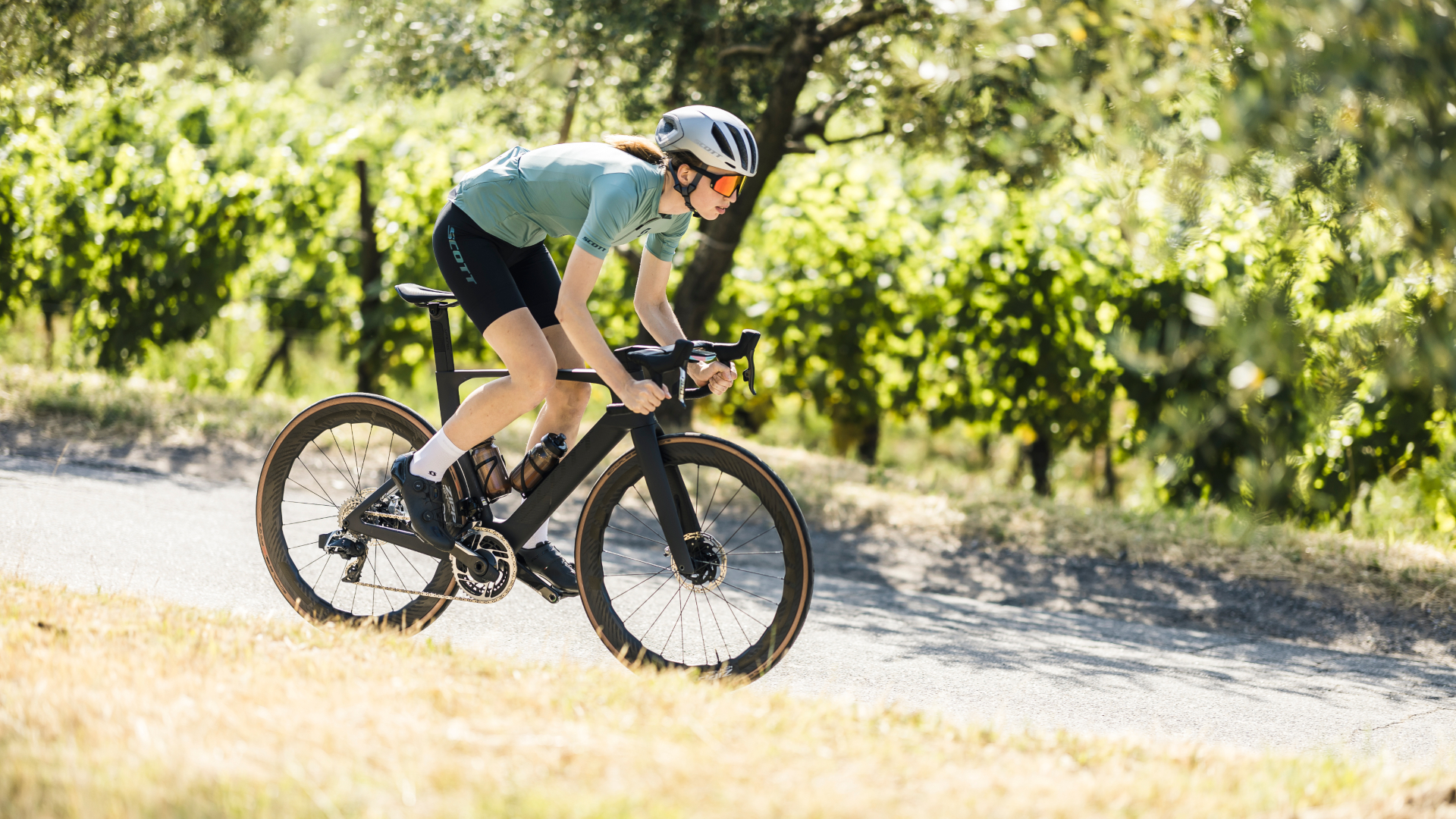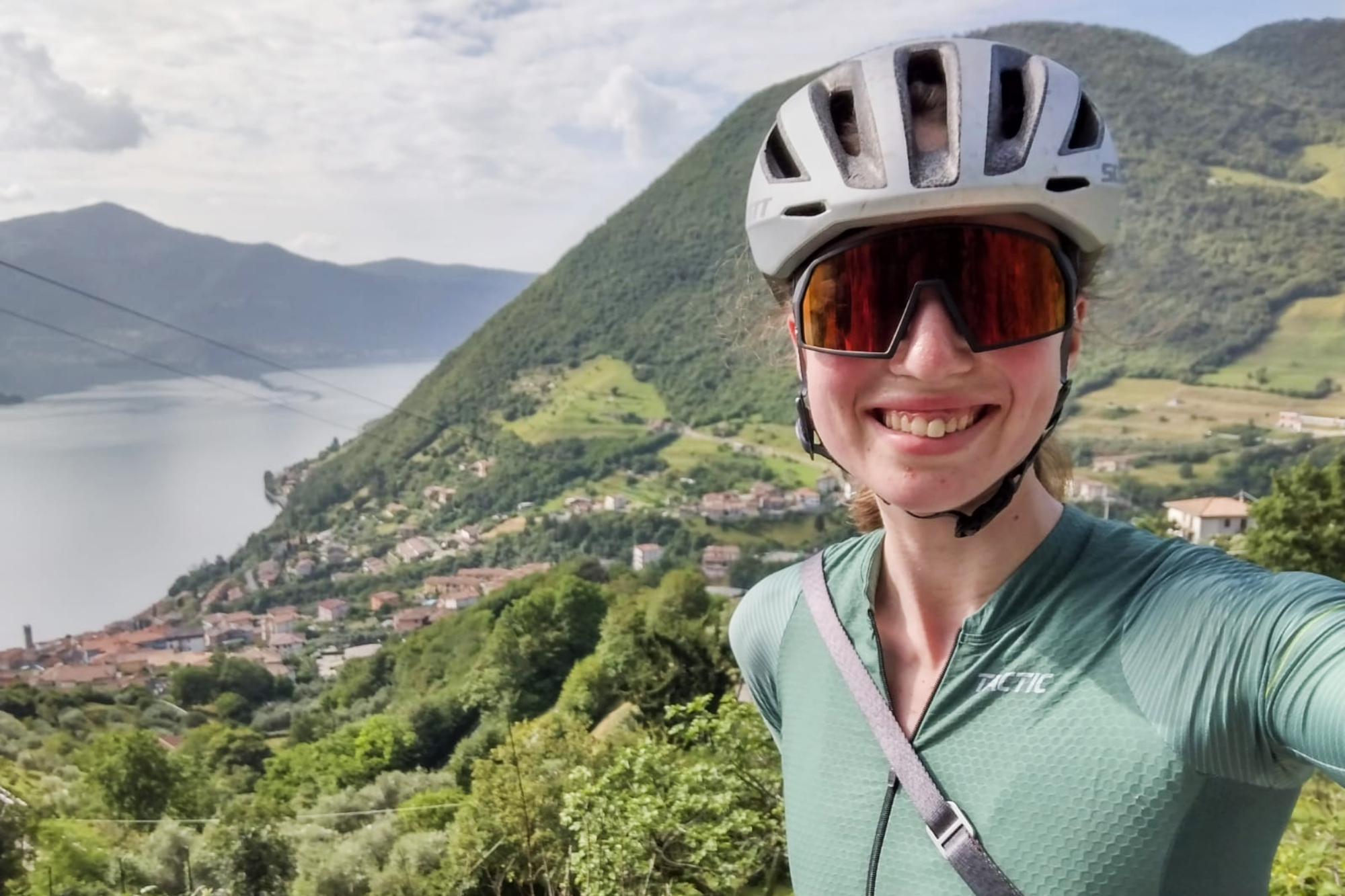First ride review: Scott Foil Ultimate RC - less weight, more comfort
Weight savings and increased comfort have made a great bike better

With an equal emphasis across weight shedding, comfort gaining and aero-optimising, Scott’s latest Foil is much more of an all-rounder than the previous iteration – whilst still being incredibly fast. Whereas before there was a strong argument for supplementing the Foil with an endurance or climbing model, now a much greater variety of riding can be enjoyed.
-
+
Comfortable
-
+
Fast
-
+
Confident handling
-
-
Heavier than some other aero bikes
You can trust Cycling Weekly.

Swiss brand Scott has just launched the latest iteration of its Foil aero bike. Like many of the most recent launches, there has been a focus on developing the comfort and weight savings, along with the more obvious tweaks to the aerodynamics.
For all of the details on the tech behind the new release, you can find our Scott Foil launch story over here – there have been some surprising developments. But if you’re looking for how the bike felt on the whole spectrum of roads, well, you’re in the right place.
We were not taken up the pristine switchback climbs of the Alps, close to the launch location in northern Italy. No, Scott’s choice for a first introduction to the new Foil was along the chatter and clatter of junction-packed towns which swarm the southern flatter lands of Lombardy’s fourth largest lake, Lake Iseo.
Perhaps a surprising choice – but the team from Scott did reassure me that there would still be plenty of smooth and fast riding to come. Plus the opportunity to test out the newly-lighter Foil on those climbs that line the north-west side of the lake.
But back to the tight, twisty and pitted urban roads of my first ride: there was a genuine reason for this route. One of the few criticisms we made of the previous iteration of the Foil did regard the comfort, but Scott took that fully on board and packed the new Foil with a host of features to soften the ride – and so the brand needed some roads to showcase this on.

Perhaps the most head-turning development is the chunk that’s been taken out of the seatpost, which has been done to allow for a much greater deflection when rattling over pitted surfaces. In my experience, it didn’t flex quite to the same extent as the Cervelo R5’s seatpost – but that must be one of the most compliant examples short of suspension.
Still, the Scott Foil’s post did feel more dampening than some other designs – such as those which rely on just lowering the top tube and seatstays – and the impacts didn’t feel quite as jarring as they looked.
The latest race content, interviews, features, reviews and expert buying guides, direct to your inbox!

Up front, the handlebars are said to be designed so as to be compliant for smaller, high frequency impacts, yet stiffening up when higher loads are applied – such as when wrestling up a climb or launching a sprint.
Perhaps this is something that becomes more noticeable for heavier and more powerful riders, but I couldn’t really discern a significant difference in the bar feel. That said, the front end did indeed feel quite smooth – but I’d put that more down to the 25mm tyre being run on Zipp’s super wide 454 NSW wheels and at plush pressures than the handlebars themselves.
Of course, the ride isn’t the magic carpet sensation of a gravel bike ridden on tarmac, but it was still impressive from such a chunky looking aero bike.
The Porsche Experience

The next ride almost couldn’t have made for a starker contrast, being on the smooth – but grippy – motor racing circuit of the Porsche Experience Centre in Franciacorta.
Just a little context: although the surface of the track may look bone-dry, the rain had been pouring down just hours before. Now, all that moisture was just hanging in the air, making it essentially into one big open air sauna – at least the airflow from riding made for some relief.
Tucking up, I was able to cruise around the track at 32kph without even trying (I won’t say breaking a sweat, as that was long gone just standing still). The stock handlebars were wider than I would have preferred, so there was definitely more scope for going faster still.

And although the stack is a few millimetres higher than on some comparable aero bikes, I didn’t feel like the Foil's geometry was a limitation at all – at least for my position.
Still, any performance gains are immaterial when you’re going head to head with someone riding the same bike – giving it a go against Team DSM’s Sam Welsford he left me as if I was standing still.
The climb
On the final day I headed out towards the unmissable climbs that envelope the eastern, northern and western sides of the lake.
On the way, I entered a 650m long tunnel that ducked under one of these hills on the way to the mouth of the climb, a thought ran through my mind - I really wished I did have the rear light that Scott has integrated into the aero profile of the seatpost.
Thanks to complications of light regulations in different countries, the stock spec of Scott Foil is with just a faring to fill in the cutaway space to preserve the aerodynamics. But there is the option to upgrade this to a custom 20 lumen rechargeable rear bike light - which does look a very neat solution.
But back to the climb. The road weaved up gradually around the housing that filled the lower slopes of the climb and left those cramped streets behind. Gaining 509 metres of elevation over 9.1km, it wasn’t a super steep one but it did drag on.
At approximately 7.2kg, the Foil doesn’t quite balance lightweight and aero as some other models do, such as Specialized’s Tarmac SL7 and Pinarello’s Dogma F. But with that said, there is something of a tipping point where a bike goes from feeling standardly responsive to having that feeling of acceleration and ernest.
I can’t say exactly where that point is – other factors such as the stiffness of the frame and the rolling resistance of the tyres all come into play – but I can say that the Foil certainly did feel satisfying quick up the climb and plenty of fun.
Of course, there is a secondary benefit of ascending a climb, that’s descending all the way back down. I got a bit of a feel for the Foil’s handling on my first couple of rides, but you can only tell so much from flatland riding.
Down the hairpins of the climb from Vigolo the Foil felt poised and controlled. It was never slow responding to any of my line adjustments, but equally it didn’t feel as if I was riding a knife edge where one slight overcorrection would spell disaster.
The most confident descenders might get a little more out of a bike with a slightly snappier road bike geometry, perhaps a steeper head angle and shorter chainstays. But I find having a bit more faith and confidence in the handling lets me push the bike further – and ultimately go faster faster – than the most aggressive designs.
Conclusion
Scott has done a great job with the new Foil. Increasing the comfort and lowering the weight has made it much more of a versatile all rounder than the previous speed-obsessed model. Whereas previously you might have wanted to complement it with a climbing or endurance bike, you can do much more (in greater comfort) with the new model.
Of course, the focus still remains on the aerodynamic performance and all-out speed on the flat – and I can tell you it feels extremely fast.

I’ve been hooked on bikes ever since the age of 12 and my first lap of the Hillingdon Cycle Circuit in the bright yellow kit of the Hillingdon Slipstreamers. For a time, my cycling life centred around racing road and track.
But that’s since broadened to include multiday two-wheeled, one-sleeping-bag adventures over whatever terrain I happen to meet - with a two-week bikepacking trip from Budapest into the mountains of Slovakia being just the latest.
I still enjoy lining up on a start line, though, racing the British Gravel Championships and finding myself on the podium at the enduro-style gravel event, Gritfest in 2022.
Height: 177cm
Weight: 60–63kg